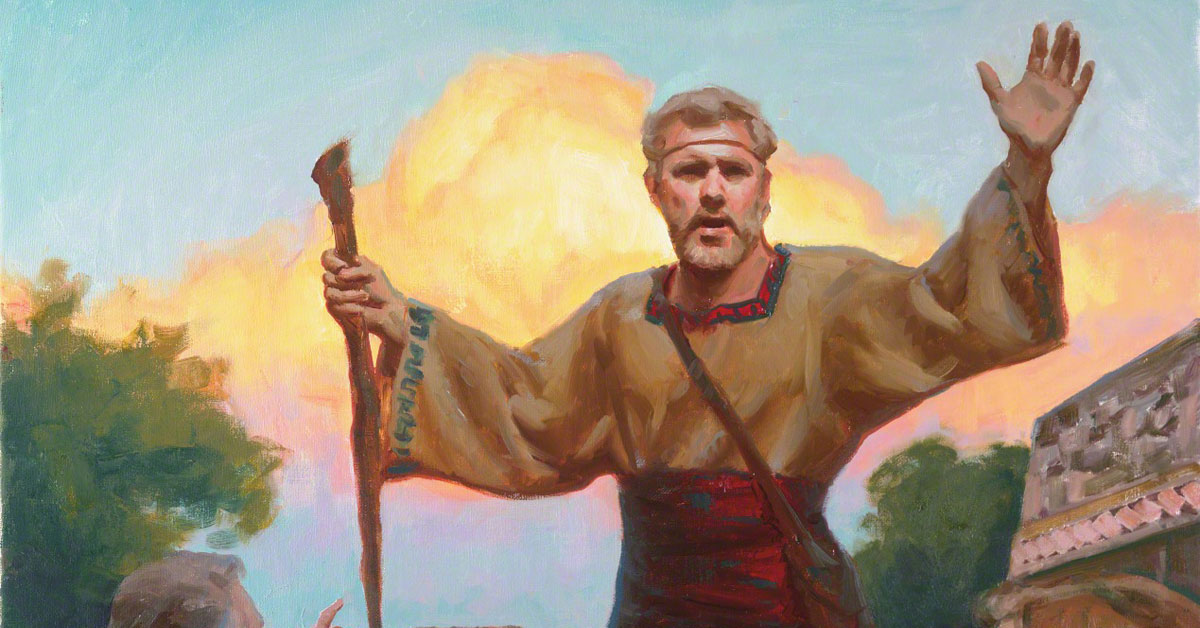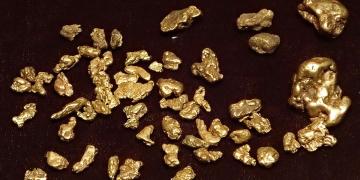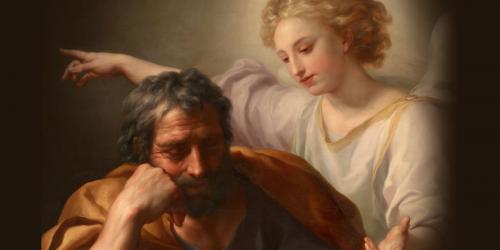You are here
Book of Mormon Central is in the process of migrating to our new Scripture Central website.
We ask for your patience during this transition. Over the coming weeks, all pages of bookofmormoncentral.org will be redirected to their corresponding page on scripturecentral.org, resulting in minimal disruption.
Come Follow Me 2020: Alma 8-12

Scripture Block
Alma 8–12
June 8–14. Jesus Christ Will Come to Redeem His People
KnoWhys
Recommended Resources
Learn about the Book of Mormon with verse by verse commentaries from renowned Book of Mormon scholars like John W. Welch and Brant A. Gardner in the ScripturePlus app. Read this week's KnoWhy connected with the Come Follow Me curriculum, and watch a video elucidating an insight in this week's scripture reading.
Reading Plan
Structure your personal scripture study by following a multimedia, day by day plan. Each day's assignment includes the required scripture passages from the Come Follow Me curriculum, as well as suggestions for additional resources to bring context and understanding to your study. To dive deeper, skip down to Additional Resources for a selected bibliography on this week's chapters. If you are looking to dive deep into your study, skip down to "Additional Resources" for a selected bibliography of articles, books, and chapters on Alma 8–12.
Monday
- Scripture: Alma 8:1–2
-
Quote: “Alma’s second journey began early in the tenth year of the reign of the judges (approximately 83 B.C.). While his first journey consisted of the single stop in Gideon, this one will take him to Melek and Ammonihah. The order of travel is determined solely by geography. Melek is closer to Zarahemla, and Ammonihah is farther.
“The geographical relationship of Gideon, Zarahemla, and Melek also explains why Alma returned to Zarahemla before traveling to Melek. The war between Zarahemla and the separatist Amlicites began on the east side of the Sidon (Alma 2). The Nephite army, which had been east of Sidon during this battle, returned to Zarahemla through the valley of Gideon (logically the location of the city Gideon).“Since Melek is west of the Sidon, Alma would have had to pass Zarahemla to travel from Gideon to Melek. Thus, it makes sense that Alma would return to Zarahemla to rest and attend to his duties there before departing again”
Gardner, Brant. Second Witness: Analytical and Contextual Commentary on the Book of Mormon. Salt Lake City, UT: Greg Kofford Books, 2007, 4:139. - KnoWhy 115: Why Did Alma Bless and Thank God After Eating?
- Scripture: Alma 8:3–32
Tuesday
- Scripture: Alma 9:1–6
-
Quote: “The people of Ammonihah rejected Alma’s testimony out of arrogance and incredulity, to be sure, but their rejection also had legal grounds. Their penchant for legal detail manifests itself when they reject Alma’s testimony on the technicality that he appeared to be a sole witness or testifier. Rather than addressing the truthfulness of Alma’s claims by accusing him of being a false witness or a false prophet (as had been the failed strategy of King Noah and his priests against Abinadi), these people argued that if God were to condemn this city as an apostate city, he would need more than one witness to stand against it in such a weighty matter: ‘Who art thou? Suppose ye that we shall believe the testimony of one man, although he should preach unto us that the earth should pass away? . . . Who is God, that sendeth no more authority than one man among this people?’ (Alma 9:2, 6). An accusation such as this one for apostasy, they correctly and forcefully argued, needed to be supported by two witnesses: ‘If there be found among you, within any of thy gates . . . transgressing his covenant, and hath gone and served other gods, . . . at the mouth of two witnesses, or three witnesses, shall he that is worthy of death be put to death; but at the mouth of one witness he shall not be put to death’ (Deuteronomy 17:2–6). In general, pentateuchal law required that ‘one witness shall not rise up against a man for any iniquity, or for any sin, in any sin that he sinneth: at the mouth of two witnesses, or at the mouth of three witnesses, shall the matter be established’ (19:15; see 17:6; Numbers 35:30; 1 Kings 21:10). This rule was especially well established and observed about the time of Lehi and during the Neo-Babylonian period”
Welch, John W. The Legal Cases in the Book of Mormon. Provo, UT: Brigham Young University Press, 2008, 242–243. -
Quote: “All of us have made wrong turns along the way. I believe the kind and merciful God, whose children we are, will judge us as lightly as He can for the wrongs that we have done and give us the maximum blessing for the good that we do. Alma’s sublime utterance seems to me an affirmation of this. Said Alma, ‘And not many days hence the Son of God shall come in his glory; and his glory shall be the glory of the Only Begotten of the Father, full of grace, equity, and truth, full of patience, mercy, and long-suffering, quick to hear the cries of his people and to answer their prayers.’”
Faust, James E. “Women, Why Weepest Thou?” General Conference October 1996. -
Quote: “I believe that our Heavenly Father wants to save every one of his children. I do not think he intends to shut any of us off because of some slight transgression, some slight failure to observe some rule or regulation. There are the great elementals that we must observe, but he is not going to be captious about the lesser things.
“I believe that his juridical concept of his dealings with his children could be expressed in this way: I believe that in his justice and mercy, he will give us the maximum reward for our acts, give us all that he can give, and in the reverse, I believe that he will impose upon us the minimum penalty which it is possible for him to impose.”
Clark, J. Reuben. Conference Report. September 1955, 84.
Explore Further
- KnoWhy 116: What does it Mean to “Prosper in the Land”?
Wednesday
- Scripture: Alma 10:1–11
- KnoWhy 117: Why is Amulek’s Household Significant?
-
Quote: “Miraculous things happen when members join with missionaries and share pure testimony with those who are not members of the Church. For example, while many people were touched by Alma’s testimony in the land of Ammonihah, when Amulek stood and added his testimony to Alma’s, ‘the people began to be astonished, seeing there was more than one witness who testified’. The same thing can happen with us today. As we stand together the Lord will help us find many more of His sheep who will know His voice as we unitedly share our testimonies with them.”
Ballard, M. Russell. “Pure Testimony.” General Conference October 2004. -
Quote: “How blessed we are if we are living under the influences that God intended we should live under. If we keep His commandments we are making progress, and development is sure to follow. But if we fail to take His advice, if we refuse to accept His counsel, then we will be in the same condition as the rest of the world who are soon, I may say, to be ‘ripe for destruction’ unless they repent; and unless we repent of the wrongs that we do, some of us will be very remorseful when we analyze the situation and examine ourselves to find we are justifying ourselves because we are like the world.”
Smith, George Albert. “The Foundations of Happiness.” General Conference April 1944.
Thursday
- Scripture: Alma 11:1–20
- Chart 89: King Mosiah's Monetary System
- KnoWhy 322: Why You Should Care About the Nephite Weights and Measures System
Friday
- Scripture: Alma 11:21-46
- KnoWhy 118: Why Would Zeezrom Attempt to Bribe Amulek?
-
Quote: “God will always love us, but He cannot save us in our sins. Remember the words of Amulek to Zeezrom that the Savior would not save His people in their sins but from their sins, the reason being that with sin we are unclean and ‘no unclean thing can inherit the kingdom of heaven’ or dwell in God’s presence. ‘And [Christ] hath power given unto him from the Father to redeem [His people] from their sins because of repentance; therefore he hath sent his angels to declare the tidings of the conditions of repentance, which bringeth unto the power of the Redeemer, unto the salvation of their souls.’”
Christofferson, D. Todd. “Abide in My Love.” General Conference October 2016.
Saturday
- Scripture: Alma 12:1–6
-
Quote: “We see in this verse an example of the marvelous transformation that can begin to take place because of the power of the word. Zeezrom, only a short time before, had asked baiting, trapping questions. Now that he is confronted by the power of God and having his sins laid open to view, his queries begin to change, to reflect a type of sincere inquiry after the truth.”
McConkie, Joseph Fielding, and Robert L. Millet. Doctrinal Commentary on the Book of Mormon. Salt Lake City, UT: Deseret Book, 2007, 3:82. -
Quote: “Those who cry out, ‘I have enough’; those who refuse to learn more; those who are content to exist at their present level of light and truth, who say essentially, ‘Thus far and no further’—these shall live and die in ignorance of the mysteries of God and shall thereby subject themselves to the chains of hell. God is gracious: He provides for us that which we are willing—and thus able—to receive”
McConkie, Joseph Fielding, and Robert L. Millet. Doctrinal Commentary on the Book of Mormon. Salt Lake City, UT: Deseret Book, 2007, 3:84–85. -
Quote: “Each of us needs to repent to some degree or another. To repent means to make the real changes in your life the Savior desires you to make for your happiness. Repentance is the great enabling principle of the gospel: when your faith in the Lord causes personal change, such action on your part, as Helaman states, ‘bringeth [you] unto the power of the Redeemer, unto the salvation of [your] souls.’ As you seek to change, remember that our loving Savior, as Alma states, has ‘all power to save every man that believeth on his name and bringeth forth fruit meet for repentance.’ This is powerful, liberating, hope-filled doctrine!”
Nash, Marcus B. "The Great Plan of Happiness." General Conference October 2006. - Scripture: Alma 12:7-21
Sunday
- Scripture: Alma 12:22–37
- KnoWhy 119: Why Did Alma Teach His Opponents about the Temple?
Additional Resources (Bibliography)
Alma 8
Brown, S. Kent “Ammonihah: Measuring Moron’s Purposes.” In A Witness for the Restoration: Essays in Honor of Robert J. Matthews, 165–175. Edited by Kent P. Jackson and Andrew C. Skinner. Provo, UT: Religious Studies Center, Brigham Young University, 2007.
Stenson, Matthew Scott. “Answering for His Order: Alma’s Clash with the Nehors.” BYU Studies Quarterly 55, no. 2 (2016): 127–153.
Valetta, Thomas R. “Conflicting Orders: Alma and Amulek in Ammonihah.” In The Temple in Time and Eternity. Edited by Donald W. Parry and Stephen D. Ricks. Provo, UT: Foundation for Ancient Research and Mormon Studies, 1999.
Swift, Charles. “When Less is More: The Reticent Narrator in the Story of Alma and Amulek.” Religious Educator: Perspectives on the Restored Gospel 13, no. 1 (2012): 88–101.
Welch, John W., and Greg Welch. “The Law of Apostate Cities.” In Charting the Book of Mormon: Visual Aids for Personal Study and Teaching. Provo, UT: Foundation for Ancient Research and Mormon Studies, 1999, chart 126.
Alma 8:6–7
(Ammonihah) Tvedtnes, John A., John Gee, and Matthew Roper. “Book of Mormon Names Attested in Ancient Hebrew Inscriptions.” Journal of Book of Mormon Studies 9, no. 1 (2000): 40–51, 78–79.
Alma 8:9–10
Lindsay, Jeff. “The Possibility of Janus Parallelism in the Book of Mormon.” Interpreter: A Journal of Latter-day Saint Faith and Scholarship 28 (2018): 1–20.
Alma 8:14–18
Uchtdorf, Dieter F. “Learn from Alma and Amulek.” In The One-Hundredth and Eighty-Sixth Semiannual General Conference of the Church of Jesus Christ of Latter-day Saints. Salt Lake City: The Church of Jesus Christ of Latter-day Saints, 2016.
Alma 8:22
Book of Mormon Central. “Why Did Alma Bless and Thank God After Eating? (Alma 8:22),” KnoWhy 115 (June 6, 2016).
Bokovoy, David E., and John A. Tvedtnes. “Blessing God After Eating One's Fill.” In Testaments: Links between the Book of Mormon and the Hebrew Bible, 161–165. Toelle, UT: Heritage Press, 2003.
Crowell, Angela M., and John A. Tvedtnes. “Blessing God after Eating One’s Fill.” In Pressing Forward with the Book of Mormon: The FARMS Updates of the 1990s, edited by John W. Welch and Melvin J. Thorne, 142–146. Provo, UT: FARMS, 1999.
Alma 9
Stenson, Matthew Scott. “Answering for His Order: Alma’s Clash with the Nehors.” BYU Studies Quarterly 55, no. 2 (2016): 127–153.
Welch, John W., and Greg Welch. “The Law of Apostate Cities.” In Charting the Book of Mormon: Visual Aids for Personal Study and Teaching. Provo, UT: Foundation for Ancient Research and Mormon Studies, 1999, chart 126.
Alma 9:9–10
S. Kent Brown. “Sojourn, Dwell, and Stay: Terms of Servitude.” In From Jerusalem to Zarahemla: Literary and Historical Studies of the Book of Mormon, 55–74. Provo, UT: Religious Studies Center, Brigham Young University, 1998.
Alma 9:13
Book of Mormon Central. “What does it Mean to “Prosper in the Land”? (Alma 9:13).” KnoWhy 116 (June 7, 2016).
Alma 10
Stenson, Matthew Scott. “Answering for His Order: Alma’s Clash with the Nehors.” BYU Studies Quarterly 55, no. 2 (2016): 127–153.
Welch, John W., and Greg Welch. “The Law of Apostate Cities.” In Charting the Book of Mormon: Visual Aids for Personal Study and Teaching. Provo, UT: Foundation for Ancient Research and Mormon Studies, 1999, chart 126.
Alma 10:2–3
Bradley, Don. “Piercing the Veil: Temple Worship in the Lost 116 Pages.” In 2012 FAIR Conference. Sandy, UT: FairMormon, 2012.
Alma 10:7
Book of Mormon Central. “Why is Amulek’s Household Significant? (Alma 10:7).” KnoWhy 117 (June 8, 2016).
Alma 10:25
Calabro, David. “’Stretch Forth Thy Hand and Prophesy’: Hand Gestures in the Book of Mormon.” Journal of the Book of Mormon and Other Restoration Scripture 21, no. 1 (2012): 46–59.
Alma 11
Stenson, Matthew Scott. “Answering for His Order: Alma’s Clash with the Nehors.” BYU Studies Quarterly 55, no. 2 (2016): 127–153.
Welch, John W., and Greg Welch. “The Law of Apostate Cities.” In Charting the Book of Mormon: Visual Aids for Personal Study and Teaching. Provo, UT: Foundation for Ancient Research and Mormon Studies, 1999, chart 126.
Alma 11:1–11
Welch, John W., and Greg Welch. “King Mosiah's Monetary System.” In Charting the Book of Mormon: Visual Aids for Personal Study and Teaching. Provo, UT: Foundation for Ancient Research and Mormon Studies, 1999, chart 110.
Welch, John W., and Greg Welch. “The Utility of the Onti and Limnah.” In Charting the Book of Mormon: Visual Aids for Personal Study and Teaching. Provo, UT: Foundation for Ancient Research and Mormon Studies, 1999, chart 112.
Welch, John W., and Greg Welch. “The Utility of the Gold Antion.” In Charting the Book of Mormon: Visual Aids for Personal Study and Teaching. Provo, UT: Foundation for Ancient Research and Mormon Studies, 1999, chart 111.
Welch, John W., and Greg Welch. “Egyptian Hieroglyphs for Grain Measurement.” In Charting the Book of Mormon: Visual Aids for Personal Study and Teaching. Provo, UT: Foundation for Ancient Research and Mormon Studies, 1999, chart 113.
Alma 11:1
Welch, John W. “The Law of Mosiah.” In Reexploring the Book of Mormon, edited by John W. Welch, 158–161. Provo, UT/Salt Lake City: FARMS/Deseret Book, 1992.
Alma 11:2
Skousen, Royal. “Latest Findings in the Book of Mormon Critical Text Project.” Insights: A Window on the Ancient World 26, no. 3 (2006): 1, 4–5.
Alma 11:3
Welch, John W. “Weighing and Measuring in the Worlds of the Book of Mormon.” Journal of Book of Mormon Studies 8, no. 2 (1999): 36–45, 86.
Smith, Robert F. “Table of Relative Values.” Journal of Book of Mormon Studies 8, no. 2 (1999): 46.
Sorenson, John L. “A Mesoamerican System of Weights and Measures? Did the ancient peoples of Mesoamerica use a system of weights and scales in measuring goods and their values?” Journal of Book of Mormon Studies 8, no. 2 (1999): 47, 86–87.
Alma 11:3,7
Welch, John W. “The Laws of Eshnunna and Nephite Economics.” In Pressing Forward with the Book of Mormon, edited by John W. Welch and Melvin J. Thorne, 147–149. Provo, UT: FARMS, 1999.
Book of Mormon Central. “Why You Should Care About the Nephite Weights and Measures System (Alma 11:7).” KnoWhy 322 (June 5, 2017).
Alma 11:21
Ricks, Stephen D. “A Nickname and a Slam Dunk: Notes on the Book of Mormon Names Zeezrom and Jershon.” Interpreter: A Journal of Mormon Scripture 8 (2014): 191–194.
Alma 11:22
Book of Mormon Central. “Why Would Zeezrom Attempt to Bribe Amulek? (Alma 11:22).” KnoWhy 118 (June 9, 2016).
Alma 11:39–41
Welch, John W., and Greg Welch. “Consistent Elements in Nephite Declarations of Faith.” In Charting the Book of Mormon: Visual Aids for Personal Study and Teaching. Provo, UT: Foundation for Ancient Research and Mormon Studies, 1999, chart 43.
Alma 11:40–45
Smith, Joseph F. “Editor's Table: Redemption Beyond the Grave.” Improvement Era 5, no. 2 (1901): 145–147.
Thompson, A. Keith. “The Doctrine of Resurrection in the Book of Mormon.” Interpreter: A Journal of Mormon Scripture 16 (2015): 101–129.
Alma 12
Baker, LeGrand L., and Stephen D. Ricks. “Alma 12, The Universal Pattern of Apostasy.” In Who Shall Ascend into the Hill of the Lord?: The Psalms in Israel’s Temple Worship in the Old Testament and in the Book of Mormon, 538–540. 2nd ed. Salt Lake City: Eborn Books, 2011.
Baker, LeGrand L., and Stephen D. Ricks. “Alma 12, Review of the Feast of Tabernacles Drama.” In Who Shall Ascend into the Hill of the Lord?: The Psalms in Israel’s Temple Worship in the Old Testament and in the Book of Mormon, 556–558. 2nd ed. Salt Lake City: Eborn Books, 2011.
Stenson, Matthew Scott. “Answering for His Order: Alma’s Clash with the Nehors.” BYU Studies Quarterly 55, no. 2 (2016): 127–153.
Matthews, Robert J. “The Probationary Nature of Mortality.” In The Book of Mormon: Alma, The Testimony of the Word, edited by Monte S. Nyman and Charles D. Tate, Jr., 47–60. Provo, UT: Religious Studies Center, Brigham Young University, 1992.
Matthews, Robert J. “The Atonement of Jesus Christ: 2 Nephi 9.” In The Book of Mormon: Second Nephi, The Doctrinal Structure, edited by Monte S. Nyman and Charles D. Tate, Jr., 177–199. Provo, UT: Religious Studies Center, Brigham Young University, 1989.
Welch, John W., and Greg Welch. “The Law of Apostate Cities.” In Charting the Book of Mormon: Visual Aids for Personal Study and Teaching. Provo, UT: Foundation for Ancient Research and Mormon Studies, 1999, chart 126.
Alma 12:3
Baker, LeGrand L., and Stephen D. Ricks. “Alma 12:3, ‘But Thou Hast Lied unto God.’” In Who Shall Ascend into the Hill of the Lord?: The Psalms in Israel’s Temple Worship in the Old Testament and in the Book of Mormon, 541–543. 2nd ed. Salt Lake City: Eborn Books, 2011.
Alma 12:5–6
Baker, LeGrand L., and Stephen D. Ricks. “Alma 12:5-6, The Power of an Embrace.” In Who Shall Ascend into the Hill of the Lord?: The Psalms in Israel’s Temple Worship in the Old Testament and in the Book of Mormon, 544–546. 2nd ed. Salt Lake City: Eborn Books, 2011.
Alma 12:7–8
Baker, LeGrand L., and Stephen D. Ricks. “Alma 12:7-8, Zeezrom’s Response.” In Who Shall Ascend into the Hill of the Lord?: The Psalms in Israel’s Temple Worship in the Old Testament and in the Book of Mormon, 546–555. 2nd ed. Salt Lake City: Eborn Books, 2011.
Alma 12:30
Book of Mormon Central. “Why Did Alma Teach His Opponents about the Temple? (Alma 12:30),” KnoWhy 119 (June 10, 2016).




